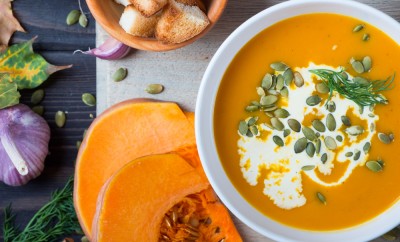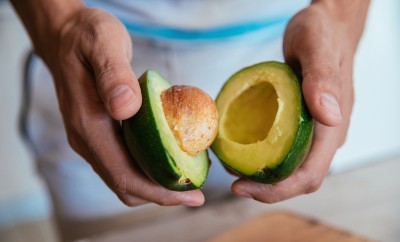Animals
My journey toward veganism

Image: Shutterstock/solominviktor
Peas be nice
My lengthy journey to veganism began when I met my first vegetarian nine years ago. As our enchanting friendship blossomed, she explained how books, documentaries, and videos on PETA.com pushed her towards her dietary conversion. Listening to her speak about her lifestyle was both intriguing and novel. Her gusto for vegetarianism was emphatic, and perhaps too rigid, but I didn’t care—I was inspired. I finally got off MySpace (yeah, I know) long enough to check out PETA’s website, and what I found was nauseating. Undercover videos featured the marrow-chilling sights and sounds of slaughterhouses as seen by workers. Captions damned ‘Big Ag’ for crimes against animals and named specific fast food brands as those responsible for the heinous abuse I watched. Deeply disturbed, I began searching the website for ways to become a vegetarian. I was hooked, but I had no idea where to begin.
During my search of PETA’s help guide, I discovered veganism. I remember thinking vegans must be utterly insane granola-munching hippies. How on earth could someone subsist on plants alone? Dismissing it as ludicrous, I focused on becoming a vegetarian, believing this was enough to help the animals. Armed with new knowledge about the meat industry, I ditched the bacon and ardently argued with anyone who questioned my choice.
Ultimately, I failed. After a mere four years of my vegetarian diet, I began eating meat again. There were several reasons I failed. First, I stopped reminding myself of why I was not eating meat, especially since I never re-watched those videos. Second, I lacked a support system. With everyone else around me eating meat, I caved. Finally, my dietary health was complicated by the development of severe lactose-intolerance.
Cognitive dissonance
For five years, I resumed eating meat and eggs in place of my precious dairy. I secretly hated that I was not strong enough to stop. I tried various methods of coping, but mostly I lied to myself through irrational justifications. I told myself things like “this chicken probably died really quickly,” or “this cow was raised eating grass!” or even “If I just eat meat once a day, that will save plenty of animals.” At the end of the day, however, I never felt right about eating meat. All of this discomfort was kept quiet in the back of my mind until one fateful day in social psychology when our professor explained the concept of cognitive dissonance. He explained that cognitive dissonance occurs when a person has inconsistent thoughts or beliefs in relation to their actions or behaviors. “I want you all to think,” he intoned, “about something you believe, on a moral level, and how you disobey that in your actions.” Before I even realized what I was saying, I muttered, “eating meat.” Frightened by my slip up, I sat back and looked around to see if anyone had heard. Most people were closing their eyes and tilting their heads to one side, deep in thought. I pushed down my feelings and tried to think of another example.
I decided then to eat less meat. In my mind, this would help satiate my cognitive dissonance. I started eating more vegetables, buying more microwavable vegan dishes, and researching vegan recipes on Pinterest. Three months later, I landed a job at a national chain health food store. This job opened up a plethora of opportunities for my vegan-curious lifestyle. I tried as many meat and dairy alternatives as possible. Over time, my diet shifted, but I still could not fully commit to veganism—not until two customers showed me truths I would not admit to myself.
Good cop bad cop
The first customer who helped me realize what I needed to do was the more aggressive of the two. He appeared close to me in age and was skeletal thin. His scraggly beard and “I woke up like this” vibe screamed hipster in a most off-putting manner. One night, when the store was particularly slow, we started talking about his vegan lifestyle. He was more aggressively adamant about animal rights than myself, and we got into a slightly heated discussion about humanely raised farm animals. It ended with him angrily saying that killing an animal in any way is inhumane, and even my beloved health food store was guilty of injustice. He grabbed his reusable bags and turned to walk away before spinning his head partly around and calling back, “You should do more research. You don’t even know what this store has done in the past.” Anxious and aggravated, I watched him walk out of the store. Our paths did not cross again for months. Though his statements left me agitated, I could not ignore the question floating around in my head. What if he’s right?
The second customer who helped lead me down the leafy green path to veganism was Mike. He was a regular who had a penchant for massive quantities of Field Roast sausages and Beanito chips. Helplessly curious, I asked him one day if he had a large family. He laughed genially and told me about the nonprofit he worked for called the Gentle Barn, and he and the volunteers were vegans. He explained that one of the Gentle Barn’s main missions was to help educate others in the community by giving tours of the sanctuary.
Yet, what intrigued me most was the man himself. Many vegans I had encountered were on the slimmer side, with messy hair and an unkempt way about them. Mike was the complete opposite, both in height and physique. He had the weather worn face of a farmer, deep laugh lines, and the build of a lineman. We had several more conversations after this encounter, and I began to recognize his face rather than his work clothes. Mike was the first vegan I met who did not strike me as a cause-driven person. He was obviously well-fed, hard working, and did not outwardly judge me for eating meat. Instead, he invited my husband and I to his sanctuary.
Conversion
A few months later, my husband and I visited the Gentle Barn on our way to a romantic weekend in Gatlinburg, TN. In the weeks leading up to our visit, I had been able to eat vegan for almost a week. Proud and excited, we pulled up to the barn one chilly Saturday morning in February. The barn and surrounding pastures looked and smelled just like my hometown and were brimming with a small crowd buzzing with excitement. The tour began with an explanation of how and why the Gentle Barn got started in Tennessee. A video about their local mascot, the cow Dudley, followed. The powerful narration elicited tears of compassion from the audience, and the story developed from one of a simple rescue to the building of a larger facility in western Knox County. As the group collectively dried our eyes, the videos ended and we all stood to walk outside and meet Dudley’s gang.
That visit to the Gentle Barn is etched forever in my mind because it was my turning point. Every moment before that was an evolution leading to a larger lifestyle change, but this event was lighting. There is something remarkable about petting a giant pasture-dog as it closes its eyes lazily and leans into you, and there was something earth shattering about having a five hundred pound pig waddle up to me and flop over on his back, waiting for belly rubs. As a paradigm shift occurred in my heart, I scratched Horton the pig’s soft belly and wondered how dreadful it would be to have to work at a slaughter house. Did all pigs act this way?
After we left the Gentle Barn for our mini vacation, I vowed in my heart to never again eat animal byproducts. I knew I would hate myself. I felt compelled to be strong for them. I have to be strong for the beings without voices. People need to know that pigs and cows are like giant dogs, and I needed to know that I could live a life minimizing any harm, whether to other humans or to the animals that pass through my life. On that cold February morning, Mike and his volunteers showed me that I could be vegan and look well-fed. I could subsist on plants alone and lead a normal life. Effecting change did not require me standing on a street corner and screaming “Meat is murder!” at passers-by. As Mike illustrated, living by example was the simplest and most effective way for me to demonstrate the normalcy of veganism.





0 comments